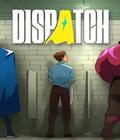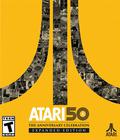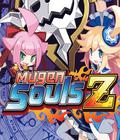Mugen Souls Z is a direct sequel to the original. Chou-Chou, the undisputed god, has conquered the nine worlds in the solar system and promptly sets out to conquer another solar system. Before she can take over a single world, though, disaster strikes. She runs into Syrma, one of the 12 ultimate gods of this system. Through a series of misadventures involving Syrma's power-sucking coffin, Chou-Chou is drained of her powers and turned into a fairy-like form. The two gods must team up to recover Chou-Chou's powers and help Syrma defeat the 12 other gods before the evil Ace destroys them both. Along the way, they'll meet a tremendous cast of wacky characters, both new and old.
In Mugen Souls Z, every character has one personality trait and uses it again and again. Most jokes revolve around the character repeating that trait, and jokes that weren't funny the first time are regularly run into the ground. Characters don't change, develop, or gain any personality over the course of the game. It feels like it's trying to mimic the goofy stylings of the earlier Disgaea titles, only with characters who are even more one-note than Laharl and his pals. The game crosses the line into creepy territory entirely too often, and it's unnerving when you consider the incredibly young-looking character designs. The end result feels like a cross between a Saturday morning cartoon and almost-pornography. It never crosses the line, but it comes close enough to make it uncomfortable, and the dialogue isn't subtle.
You have a party of multiple characters, both plot-related and ones you can create and customize. In combat, you and the enemies take turns moving around the battlefield and attacking one another, though there are some elements of positioning and area control. Different weapons have different ranges, and some special moves can hit multiple enemies at once if you're positioned properly. The most complex thing to keep track of are crystals, which are scattered across the field and come in two shapes: large and small. Large crystals alter the battlefield with effects such as attack and defense increases, elemental swaps, additional experience, and gold drops. Small crystals only function in a limited area around them and tend to have more powerful effects, such as invincibility and one-hit kills. You can destroy crystals or take advantage of them, but so can your enemies. Many bosses camp out at powerful crystal locations, forcing you to figure out how to move the boss or destroy the crystal.
Early on, Syrma learns that she can captivate enemies by appealing to their "moe," which is a Japanese term that refers to an agreeable personality trait. With the touch of a button, you can change Syrma's personality to one of seven different types to appeal to an enemy. Each personality has weapon attributes and a passive skill, but the biggest impact is their moe. If you have the correct moe attribute, the enemy will like you more when you try to captivate then. Have the wrong type, and they get ticked off.
Syrma can attempt to captivate once a turn. It doesn't use up an action, so there's no harm in attempting to captivate every enemy. To do so, you select one of three fetishes, which is like picking a dialogue option, and each option has a different success rate. You select multiple fetishes in a row and then unleash them on the enemy. If you successfully captivate them, it turns them into a peon, which is used to power up G-Castle. If they give you a rare item, then they're successfully captivated and converted into a temporary battle power-up, which you can select from the combat menu. The last, and most dangerous, option is that you tick them off, in which case they become enraged and cover up again. If you're not careful, you may befriend one and tick off another. On the other hand, if you can captivate multiple enemies at once, you can quickly clear the field.
In addition to regular battles, there are G-Castle battles. Your G-Castle is a combination of a castle and a giant fighting robot that's powered by the monsters you've converted into peons. The battles resemble the duels from the original Suikoden and play out a lot like an advanced game of rock-paper-scissors. A fast attack can be deflected or absorbed, but a barrier can be broken by a piercing attack, which can be stopped by a fast attack. The power of these moves depends on your enemy, the number of peons you've collected, and your equipped skills. There are also dialogue warnings that hint at which attack the enemy will use.
The dungeons, such as they are, are pretty simple. They are large open fields that you can explore at will. Some have different gimmicks, such as teleporters or barriers that you need to find a way around, but that is about it. Instead of navigating well-designed dungeons, you'll wander back and forth across the area looking for event triggers to start the next cut scene. You look on the map and go where it says, and a cut scene plays out. Also located on the world map are "Planet Energy" locations, which can be captivated, much like enemies. They either have a preferred moe type or want you to kill a certain number of enemies or hand over a specific item. Captivating Planet Energy points unlocks minor new abilities that allow you to explore more of the area, such as a higher jump or the ability to swim. It's not a bad idea, but it feels pretty bland due to the poor dungeon design. There are a number of story dungeons and optional Mugen Field areas you can use to grind levels and get rare items.
Mugen Souls Z is a pretty dull-looking game. The PlayStation 3 is capable of putting out some nice graphics, which is why it's confusing that Mugen Souls Z looks like a game from early in the system's life. The character models are simple super-deformed characters with poor attack animations and little visual flair. The environments are similarly bland and one-note, and there's very little to see anywhere. There is more detailed hand-drawn character art used for the cut scenes, including some special event artwork, but that's about it. The voice acting is low quality, and the actors aren't very convincing. Likewise, the music is dull and unmemorable. There is an option to utilize Japanese dialogue instead, but to me, it didn't seem to be a step up from the English voice actors.
Mugen Souls Z is both obtuse and simplistic, and the game's biggest problem is that it isn't fun. The combat is boring and padded with multiple systems, but none that work in conjunction to form a cohesive whole. The story feels like a quick attempt to copy Disgaea but with a creepy, innuendo-filled story and a completely unengaging cast of characters. Mugen Souls Z sleepwalks through from beginning to end, doing the bare minimum necessary to advance the game. Mugen Souls Z does little to rock the boat, so fans of the original might be interested in revisiting this title, but anyone else should pass.
Score: 6.0/10
More articles about Mugen Souls Z











 Mugen Souls Z features a vibrant, free-roaming battle map, unique turn-based combat, and massive amounts of customization to quench even the most hardcore RPG fan's thirst.
Mugen Souls Z features a vibrant, free-roaming battle map, unique turn-based combat, and massive amounts of customization to quench even the most hardcore RPG fan's thirst.
























